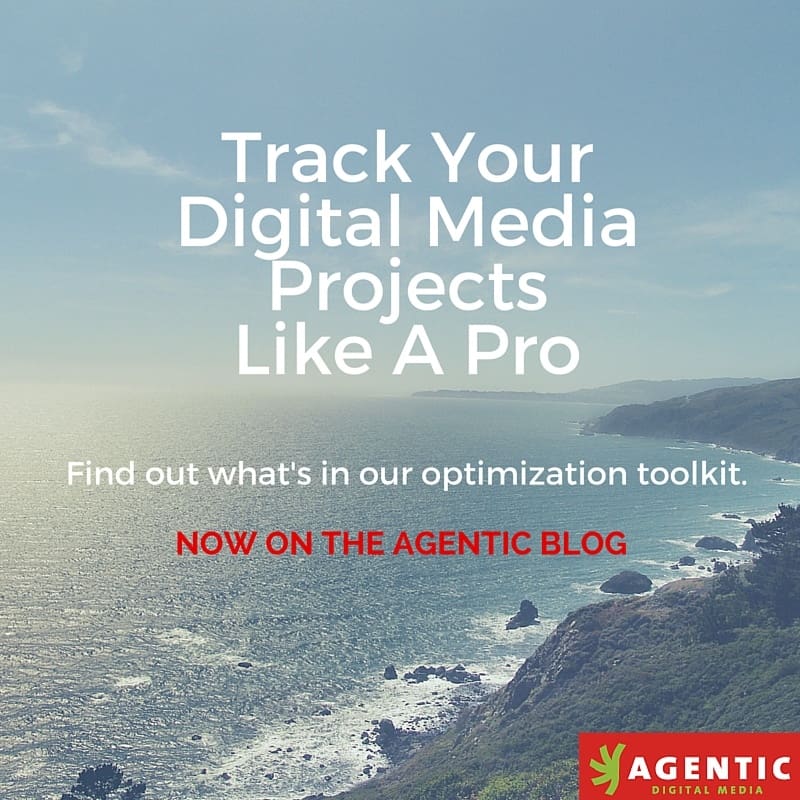Track Your Digital Media Projects Like A Pro

In our last blog post about our process for optimizing websites, I mentioned some of the tools we use to measure metrics. In this post, I will go into more detail about these tools. (Note: This won’t cover all of the testing tools we use in a full cycle of development. That will be the subject of a future blog post.)
Google Analytics
The first tool we use a lot of is Google Analytics. As far as digital metrics go, it’s the universal. It is vital for our clients to understand who, when, and why audiences are using their website or digital campaign. Becoming an expert in Google Analytics is certainly helpful, but it is not easy. I recommend at least a basic Google Analytics course for all of our clients. This sheds light on what is going on behind-the-scenes. Knowing what “bounce rates” mean and the difference between “sessions” and “unique visitors” can go a long way in helping to demystify your website and how audiences engage with it.
Google Tag Manager
Another important tool we use is Google Tag Manager. GTM, as it is known, is an advanced tool that allows you to include multiple web services within your website. It also allows for more sophisticated activity tracking on any particular web page. This is pretty sophisticated stuff. Initially setting up GTM incorrectly could really impact how your analytics function. So it’s best to leave this to the experts, though it’s good to understand how it works. Google Tag Manager is especially useful for tracking single page campaign sites such as a scrolling page. Typical analytics would only track this as one page view, but with Google Tag Manager we can set up more sophisticated measurement algorithms to track specific actions that occur on the page.
Optimizely
Teaming Google Analytics up with Optimizely for optimization experiments makes for a powerful combination in strategic foresight. Optimizely is a paid tool that allows us to compare two elements on a webpage and decide which one is more effective in achieving our goal. A classic case of using A/B testing would be in the subject line of an email. We use it to compare elements like headlines, or the call to action text on a button. Optimizely can be especiallyÊ helpful for single page campaign sites. Sometimes the customer interface won’t suffice for our more advanced campaigns, as we need advanced functions, but it’s still very helpful for many campaigns.
UserTesting.com & Lucky Orange
With the above tools in play, we gain a lot of knowledge about user engagement. But we can also take this to the next level by analyzing user interaction on the website second by second. There are two tools that we use for this. The first one is UserTesting.com. This service allows us to choose a particular demographic and/or computer (or mobile) platform to test a particular scenario. For example, in a recent campaign we tested whether people could complete the changes to submit a specific energy requirement. (See the final campaign at PicMyEnergyMix.org.) By recording the entire session as a video, UserTesting.com allows us to review each activity a person completes, or does not complete, in our campaign. We can also set up tasks that allow test users to speak while going through the experience. This gives us an inside perspective of users’ step-by-step experience on the campaign or website. It’s very helpful to gain this kind of insight and understanding into how first time users perceive the project, as it’s difficult for people who planned it to see the finished product with an objective eye. In the previous example, we learned that some of the language we were using wasn’t clear enough for people. It also helped us realize that we needed to make buttons larger so that people noticed them enough to use them.
The second tool we use to measure time-based user interaction is LuckyOrange.com. Lucky Orange tracks live activity on your website and records it so that it can be played back at your leisure. It’s proven to be quite useful to see this kind of user interaction on websites. Though it becomes overwhelming to watch videos if there are many visitors at once, you can set up goals to help quantify how people interact with your service or campaign. We tend to analyze these goals using themes that I have talked about in previous blog postings with regards to engagement. In this case, the same idea of gathering together similar comments or observations helps to make strategic decisions with perspective.
Unbounce
Unbounce allows us to set up a landing page apart from a website (in the backend) that can then be used to measure initial site visits. This is especially useful when we are using Google ads or Facebook ads to drive people to the website. We typically create a variety of Google ads and drive them to different pages to see which of them are more successful in convincing visitors to continue on.
Alas, we use many different tools but hopefully this provides you with some insight into a few of the key tools that will let you track your projects like we do.
Here’s a table summarizing our most popular tools:
Google Analytics and Universal Analytics
Google Consumer Surveys for user feedback
Google Tag Manager to manage Universal Analytics tags and Google Consumer Surveys
Optimizely for optimization experiments
Lucky Orange for seeing how people actually interact with the site
UserTesting.com for independent user tests
Unbounce for landing page optimization
- Author: Phillip Djwa
